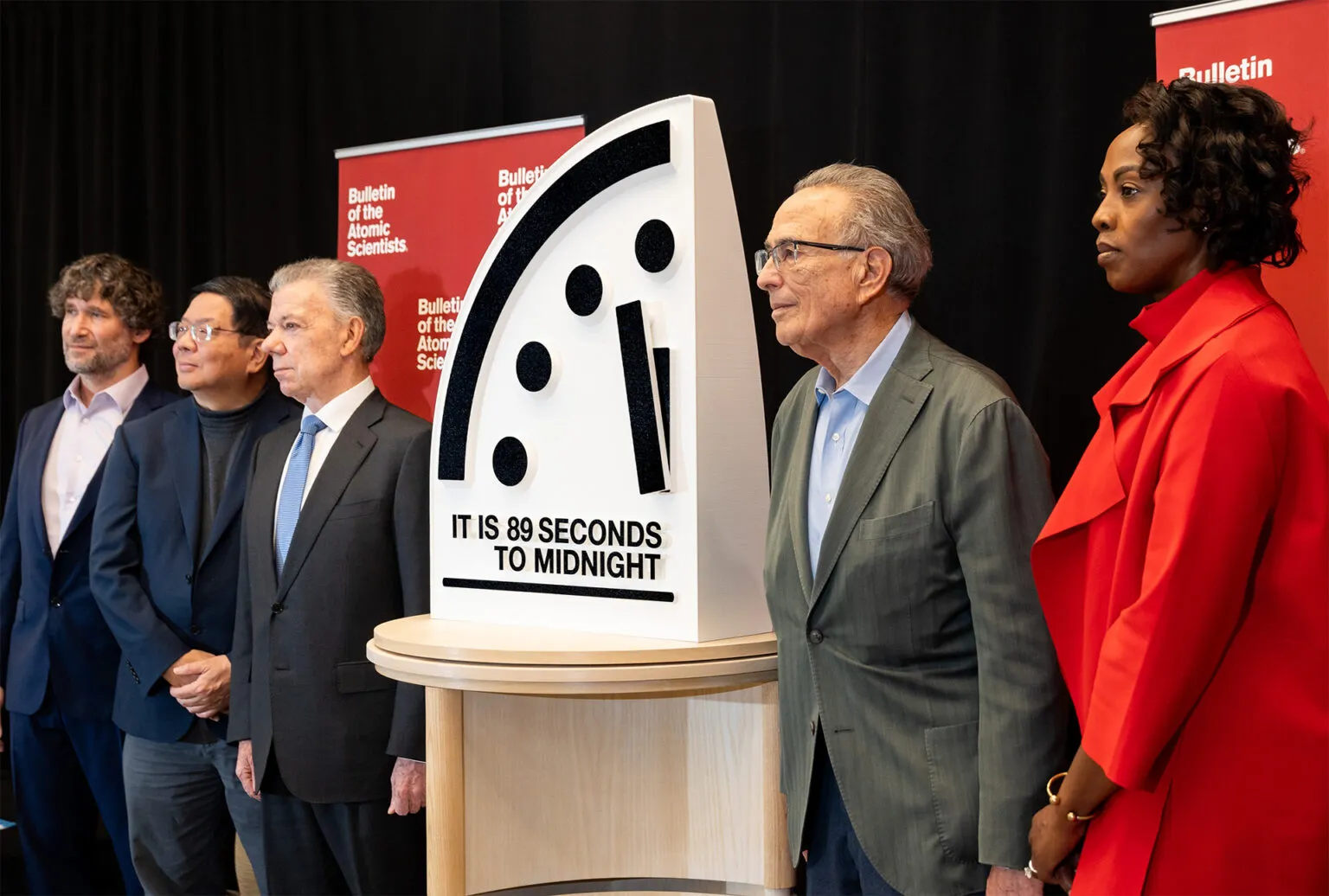The symbolic Doomsday Clock has moved to just 89 seconds to midnight, marking the closest humanity has ever been to potential global catastrophe. This one-second adjustment from last year’s setting reflects growing concerns about multiple worldwide threats, from nuclear tensions to climate change.
What is the Doomsday Clock?
The Doomsday Clock is a symbolic timepiece created by the Bulletin of Atomic Scientists in 1947. Founded by scientists including J. Robert Oppenheimer and Albert Einstein, the organization established the clock as a way to visualize how close humanity is to global catastrophe. Midnight represents complete annihilation, and the time is adjusted annually based on global events and threats.
Why the Latest Change Matters
Daniel Holz, chair of the Science and Security Board at the Bulletin of Atomic Scientists, emphasizes the gravity of this adjustment: “Because the world is already perilously close to the precipice, a move of even a single second should be taken as an indication of extreme danger.”
Key Factors Behind the Decision:
- Ongoing conflicts in Ukraine and the Middle East
- Increasing nuclear proliferation risks
- Climate change acceleration
- Artificial intelligence military applications
- Global pandemic threats
- Spread of misinformation
Historical Context
The clock’s settings have varied significantly since its creation:
- 1947: Initial setting at 7 minutes to midnight
- 1991: Most optimistic setting at 17 minutes to midnight (end of Cold War)
- 2020: First move to seconds instead of minutes
- 2025: Current record at 89 seconds to midnight
Hope for the Future
The Bulletin emphasizes that this warning is a call to action rather than a prediction of inevitable doom. They specifically point to major powers like the US, China, and Russia as having “the prime responsibility to pull the world back from the brink.”
The organization maintains that through international cooperation and decisive action on global challenges, the clock’s hands can be turned back, offering hope for a more secure future.
Sources: Vox, EuroNews, Local12

